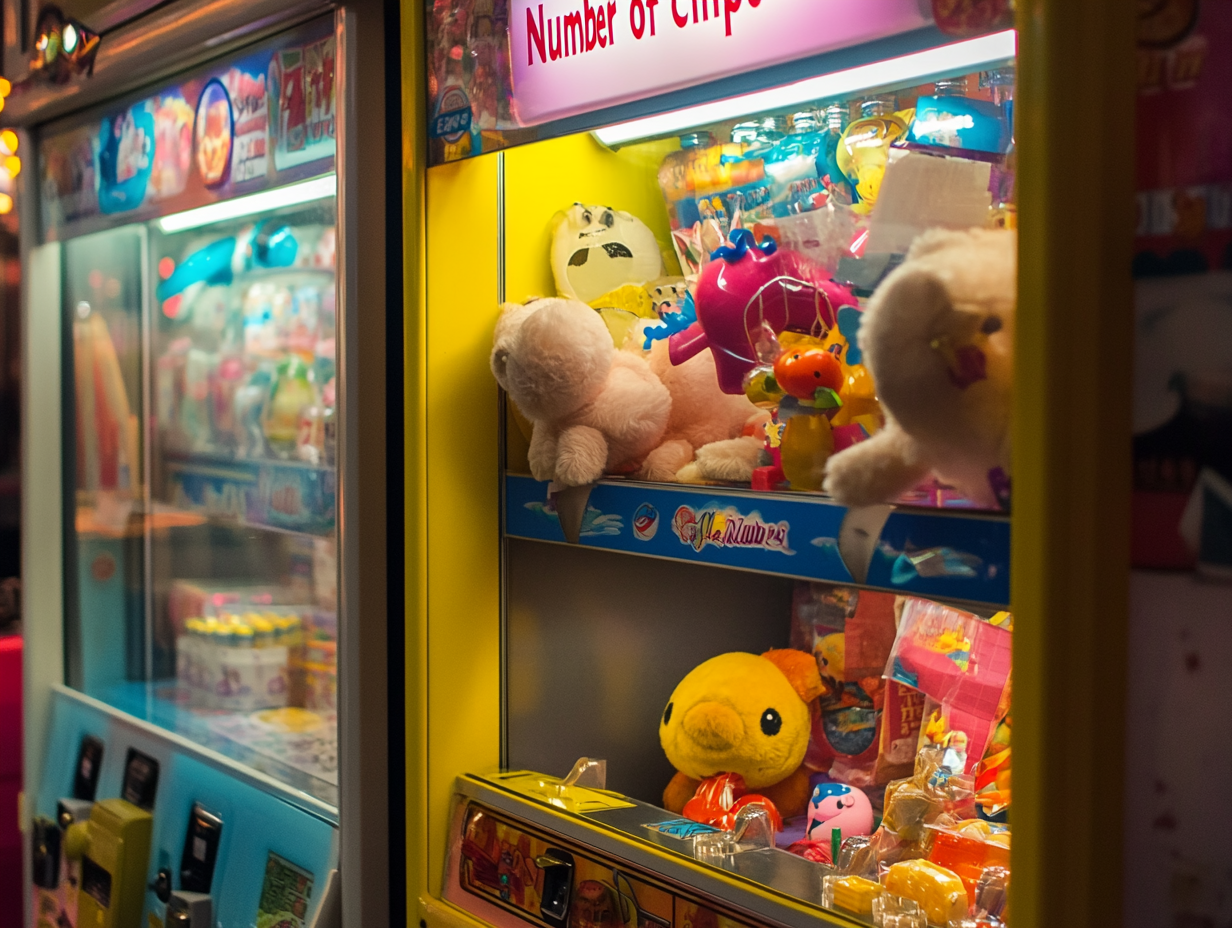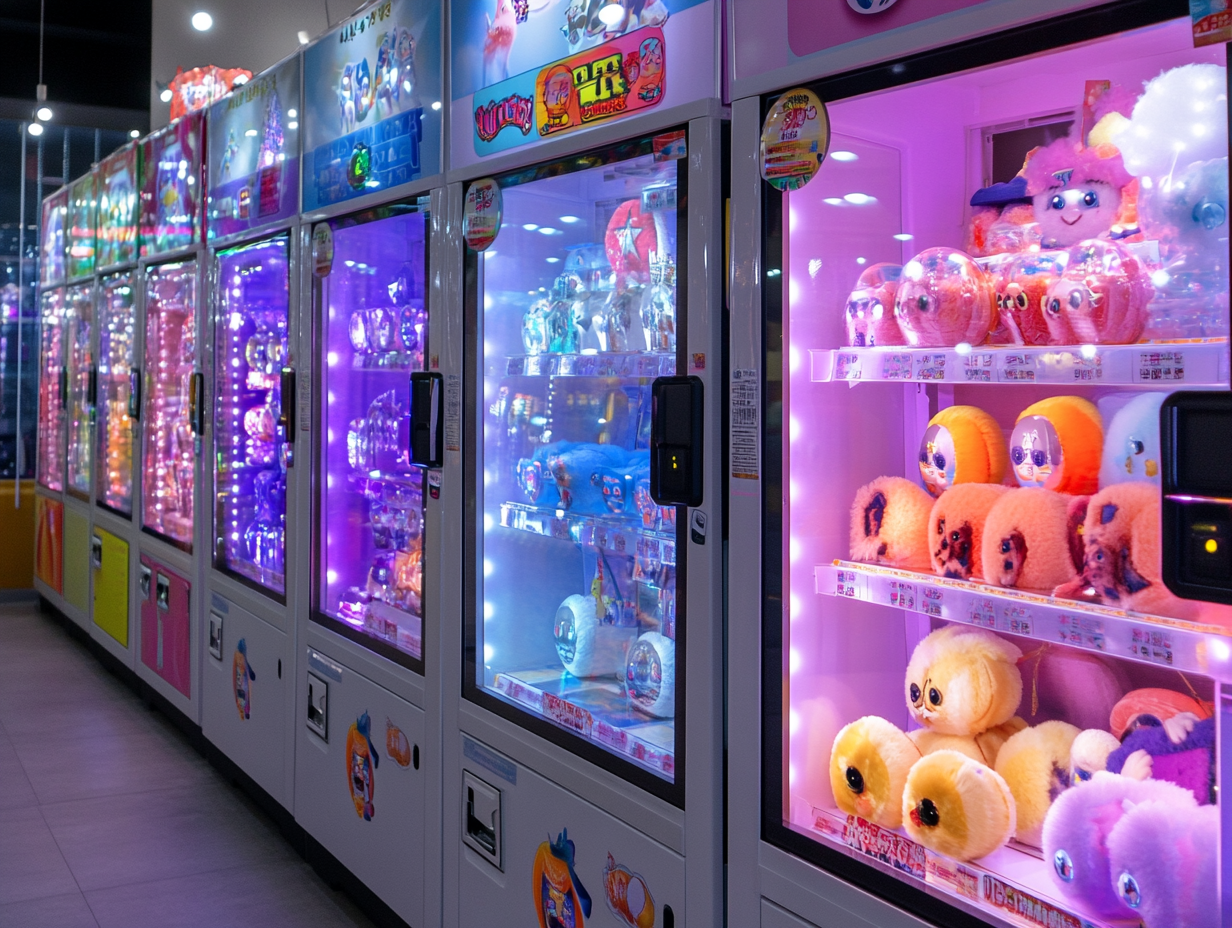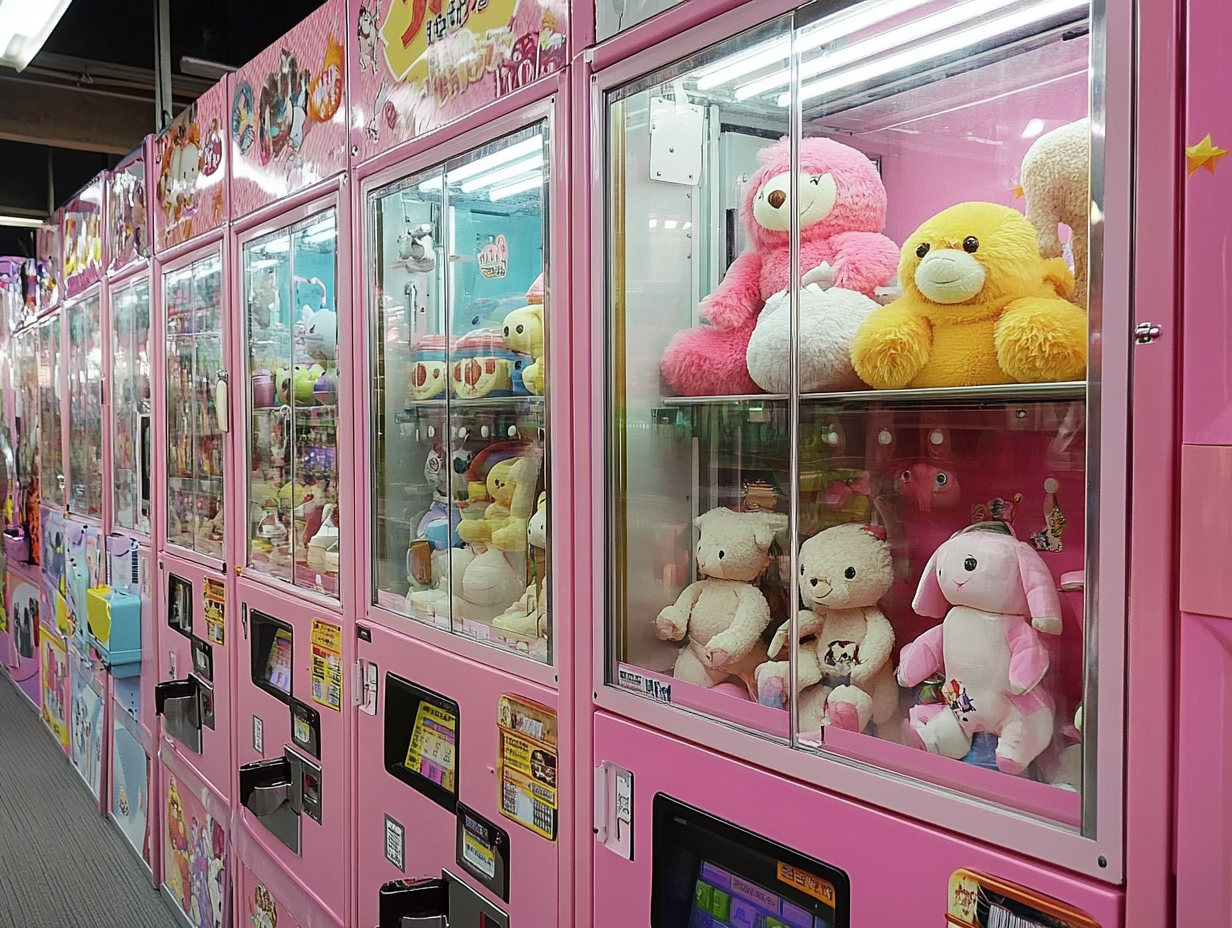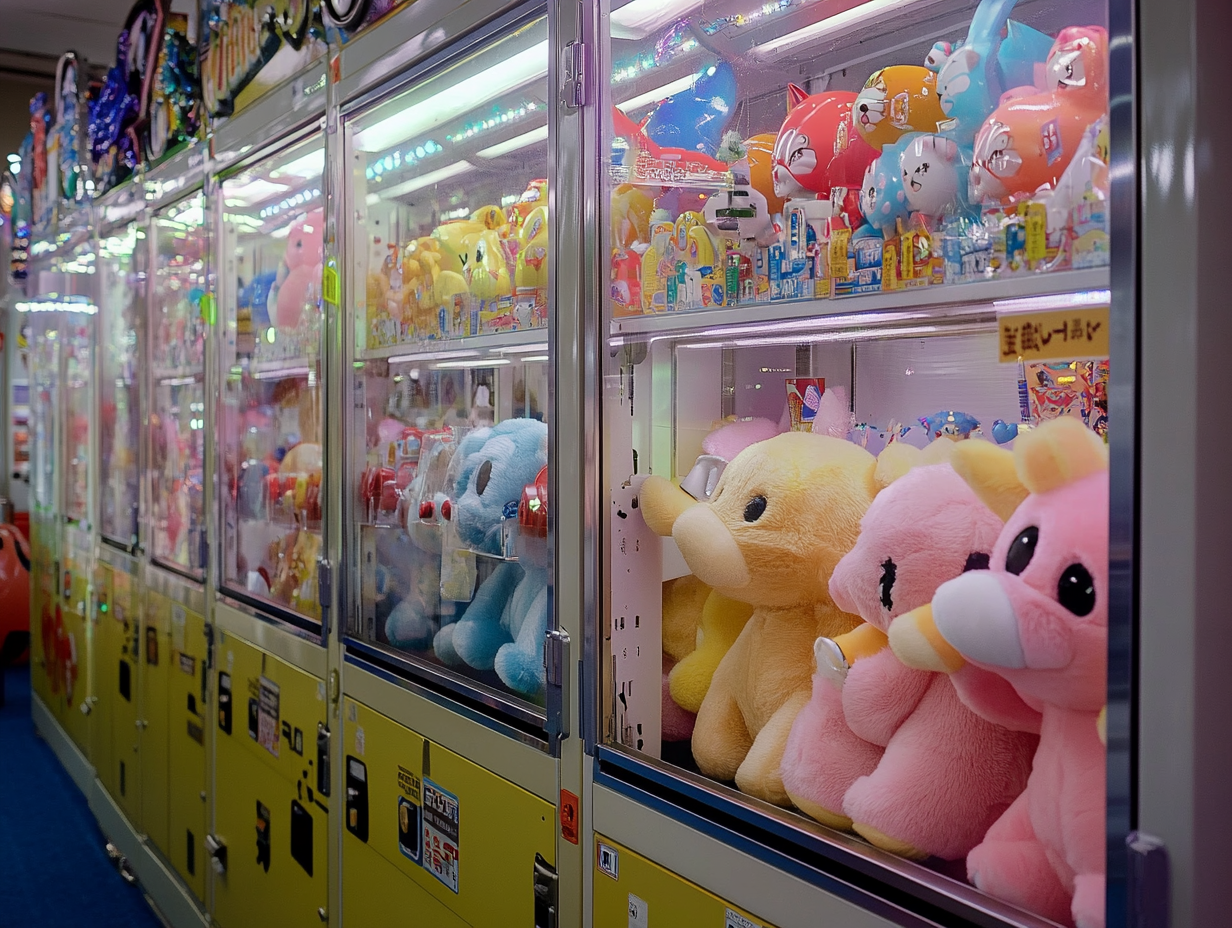I. Introduction
Arcade crane claw machines, a staple of entertainment centers and arcades worldwide, have long been a source of both joy and frustration for players. These seemingly simple games, where participants attempt to grab prizes using a mechanical claw, have often been surrounded by controversy and speculation. The question on many players' minds is straightforward yet complex: Are arcade games rigged, particularly the popular claw game?
To answer this question, we need to delve into the intricate workings of these machines, exploring their components, operation, and the various ways they can be adjusted or potentially "rigged" by operators. This article aims to shed light on the mechanisms behind claw machines, helping players understand the challenges they face and the strategies they might employ to improve their chances of success.

II. Claw Machine Components and Operation
At the heart of every modern claw machine is a sophisticated main control board that governs its operation. This board comes equipped with several key features:
1.LCD Display: This screen allows operators to view and adjust settings and parameters, providing a user-friendly interface for machine management.
2.Flexible Account Inquiry Methods: Operators can easily check the number of coins inserted or the quantity of prizes dispensed directly from the main board. Some machines even feature a stopwatch function for time-based inquiries.
3.High-Precision Claw Force Voltage Adjustment: This feature enables fine-tuning of the claw's gripping strength, allowing operators to adjust the difficulty based on the prizes being offered.
The basic operation of a claw machine typically follows this sequence:
1.Coin Insertion: Players insert the required number of coins or tokens to initiate the game. The machine's LCD panel displays the available game credits.
2.Game Play: Once credits are available, the machine's standby music changes to game music, and the control buttons light up. Players use the joystick to position the claw over their desired prize.
3.Claw Drop: When the player presses the button (or after a set time limit), the claw descends. Some machines feature a "double tap" function, allowing players to close the claw mid-descent.
4.Prize Retrieval: The claw attempts to grip the prize and lift it towards the prize chute. Whether the prize is successfully retrieved depends on various factors, including claw strength and prize characteristics.
Understanding these components and the basic operation is crucial for players hoping to outsmart the machine. However, as we'll explore in the next section, there are numerous ways in which the game's difficulty can be adjusted, potentially tipping the odds in the operator's favor.

III. Rigging Mechanisms in Claw Machines
While "rigged" might be a strong term, claw machines are designed with various adjustable settings that can significantly impact a player's chances of winning. These mechanisms are not necessarily malicious but are intended to balance player enjoyment with the operator's need for profitability. Let's explore some of these adjustable features:
A. Adjustable Settings
1.Coin-to-Play Ratio: Operators can set how many coins are required for a single play. This can range from 1 to 9 coins per game, affecting the cost-to-play ratio for players.
2.Game Duration: The playtime can be adjusted from 10 to 60 seconds. This setting determines how long a player has to position the claw and attempt to grab a prize.
3.Claw Strength: Perhaps the most crucial setting, claw strength is divided into two phases:
1.Strong Grip: This determines the initial gripping power when the claw descends and closes on a prize. It can be set from 5 to 48, with higher values indicating stronger grips.
2.Weak Grip: This sets the claw's strength as it ascends with the prize. It can be adjusted from 0 to 48, with lower values making it more likely for the prize to slip out.
4.Prize Rebate and Catch Probability: Operators can set how often the machine should allow a win. For example, they might set it to pay out every 200 plays, ensuring a certain profit margin before a prize is won.

B. Sales Models
Claw machines often have different "sales models" that determine how prizes are dispensed:
1.Random Pattern: The machine randomly decides when to allow a strong enough grip for a potential win.
2.Guaranteed Pattern: After a set number of plays, the machine guarantees a strong grip, giving players a fair chance at winning.
3.Forced Delivery Pattern: Similar to the guaranteed pattern, but it ensures a win within a certain number of attempts after the set threshold is reached.

IV. Technical Aspects of Claw Machine Operation
To fully understand how claw machines can be adjusted, it's important to look at their technical components:
A. Motor Systems: Claw machines use separate motors for up/down, left/right, and front/rear movements. These can be adjusted for speed and precision.
B. Claw Mechanism: The claw operates using an electromagnetic system. When activated, it creates a magnetic field that closes the claw. The strength of this field can be adjusted, affecting the claw's gripping power.
C. Sensors and Switches: Various sensors and switches, such as optical eye boards and stop switches, monitor the claw's position and movement. These ensure the claw operates within set parameters and can detect when a prize has been won.
Understanding these technical aspects reveals how a seemingly simple game can be finely tuned to control difficulty and payout rates. In the next section, we'll explore signs that players can look for to determine if a machine might be set to a particularly challenging level.

V. Signs of a Potentially Rigged Claw Machine
While it's important to note that adjusting settings doesn't necessarily mean a machine is unfairly rigged, there are certain signs players can look for that might indicate a machine is set to be particularly challenging:
1.Claw Behavior Inconsistencies: If the claw doesn't close fully or seems to lose grip strength at the same point every time, this could indicate intentional weakening.
2.Prize Drop Patterns: If prizes consistently fall from the claw at the same spot, especially just before reaching the prize chute, this might be a programmed behavior.
3.Game Difficulty Settings: Some machines have visible settings like "Number of clips" (1-999 innings). A high number here could indicate that many plays are required before a win is likely.

VI. Operator Adjustments and Settings
Claw machine operators have access to a wide range of settings through the machine's menu system. Some key adjustable parameters include:
A. Basic Parameter Setup:
·Coins to play
·Playtime
·Game volume
·Gift export position
·Crane position (front/rear)
·Aerial retrieval on/off
·Winning sensing on/off
·Swing sorting on/off
·Free games on/off
·Language options
·Game and background music selection

B. Game Difficulty Adjustment:
·Gift rebate (1-200 plays)
·Second best catch probability
·Sales model (random/guaranteed/forced delivery)

C. Crane Parameters Adjustment:
·Strong grip strength and duration
·Weak grip strength
·Rope length
·Front/rear, left/right, and up/down speed
·Top delay
·Loose claw length
·Bottom stay time
·Upstream pullup strength

VII. Troubleshooting and Maintenance
To keep claw machines operating smoothly, operators must be aware of common issues and how to address them:
A. Common Issues:
·Coin acceptance problems
·Claw malfunctions (not opening/closing, weak grip)
·Crane movement issues

B. Error Codes:
·Up and down motor fretting fault
·Left and right motor fretting fault
·Front and rear motor fretting fault

C. Basic Troubleshooting Steps:
·Checking connections and power supply
·Verifying switch and sensor functionality
·Adjusting settings as needed
Understanding these maintenance aspects can help players recognize when a machine might be malfunctioning rather than intentionally set to be difficult.

VIII. Player Strategies and Considerations
Given the adjustable nature of claw machines, players can employ certain strategies to improve their chances:
1.Observe Machine Behavior: Watch others play to gauge the claw's strength and behavior.
2.Use Angles: Look at prizes from different angles to ensure proper alignment.
3.Try the Double Tap: If available, use the double tap feature to close the claw at the optimal moment.
4.Assess Prize and Claw Size: Choose prizes that match well with the claw's size and apparent strength.
5.Ethical Considerations: While understanding how claw machines work can improve one's chances, players should approach these games as entertainment rather than guaranteed wins.

IX. Conclusion
Claw machines, with their complex systems of adjustable settings, blur the line between skill-based games and games of chance. While they can be set to be more or less difficult, calling them "rigged" might be an oversimplification. These machines are designed to balance player experience with operator profitability.
As arcade technology advances, we may see even more sophisticated systems emerge. For now, players armed with knowledge about how these machines operate can make more informed decisions about when and how to play.
Remember, the key to enjoying claw machines lies in understanding their nature: they are primarily entertainment devices, not guaranteed prize dispensers. By approaching them with this mindset, players can enjoy the challenge and occasional victory these iconic arcade games provide.
日本語
한국어
ไทย
Türkçe
English
العربية
Français
Русский
Español
Português
Deutsch
italiano
Nederlands
Tiếng Việt
Polski
አማርኛ
ພາສາລາວ
ភាសាខ្មែរ
Bahasa Melayu
ဗမာစာ
தமிழ்
Filipino
Bahasa Indonesia
magyar
Română
Čeština
Монгол
қазақ
Српски
हिन्दी
فارسی
Kiswahili
Slovenčina
Slovenščina
Norsk
Svenska
українська
Ελληνικά
Suomi
Հայերեն
עברית
Latine
Dansk
اردو
Shqip
বাংলা
Hrvatski
Afrikaans
Gaeilge
Eesti keel
Māori































